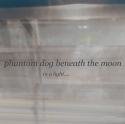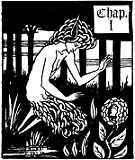
Jose Gonzalez is a brilliant singer/songwriter guitarist with a full length CD and 3 EPs available from www.parasol.com
Veneer is the debut album by Swedish-born minstrel José González…already a certified quiet-is-the-new-loud legend in his native Sweden. Who needs bells and whistles (outside of a forlorn trumpet and some subliminal percussion) when songs are this strong and the voice is this perfect? When all that you need to hold an audience in blissful rapture is what you can balance on a barstool? Jose’s sensual, sensitive, powerful vocals and supernaturally gifted guitar playing truly recalls artists like Nick Drake, Elliott Smith, Hayden, and Mark Kozelek. He’s earned the accolades by writing incredible songs and staying true to his heart, keeping the songs barebones simple.
The José González song "Crosses" was featured on the season finale of The OC.U.S. press now rolling in:
Entertainment Weekly:"A Nick Drake manqué without — we hope — the suicidal tendencies, José González is a gifted Swedish singer-songwriter of Argentinean descent, whose deft, syncopated fingerpicking and hushed vocals are hypnotic on Veneer, and never more so than when he covers the Knife's ''Heartbeats,'' turning a synth-pop assault into a heartbreaking lullaby."
Harp Magazine:"A succinct acoustic meditation-11 cuts in 30 minutes-that includes hypnotic guitar figures (“Deadweight on Velveteen,” in particular) that create the feeling that you’ve stumbled into a pre-dawn workout for emerging finger-pickers..."
Chicago Tribune:"Everything about guitarist-songwriter Jose Gonzalez surprises you. The first surprise is that he's Swedish. Second, unlike most of his rock-crazed countrymen, Gonzalez's hushed, solo acoustic guitar work recalls the eclectic yet introspective "folk" of British troubadours Bert Jansch and Nick Drake... "Veneer" really is a kindred spirit to Drake's classic "Pink Moon"..."
Pitchfork:"It's taken two years for the debut album by singer/songwriter José González (Swedish, obv.) to reach these shores, and it's easy to see what nudged it here. González's sparse recordings showcase hushed, double-tracked vocals, haunted imagery, and a clearly gifted classical guitarist. His gripping acoustic cover of countryfolk the Knife's electro-pop "Heartbeats" was even a minor hit in his homeland. An ethereal, sometimes-aloof troubadour, González will sing you to sleep and then dash off under cover of night..."
Uncommon Folk:"Minimalism is the word on Veneer. Soft, hushed vocals, immaculate and brilliant guitar picking, and soft and subtle songs are the stuff that make up González’s work... Though very classical in style, though very personal in nature, Veneer sounds and feels new, with the ability to connect with new people and the new emotions of an ever-changing world..."Plenty of UK press to peruse as well: Time Out London: "Veneer displays an intense yet hushed talent, equally in thrall to the floating drone of post rock as to the elegant finger picking of Bert Jansch…"Uncut Magazine: "Mentioning a new artist in the same breath as Nick Drake has become shorthand for anyone with an acoustic guitar who favors melancholy restraint. Such a comparison, however, only hints at the talents of Jose Gonzalez. The Swedish singer-songwriter marries Drake’s mournful minimalism to deftly picked, Latino guitar. The results – melodic purity, a mesmeric rhythmic drive and stark emotionalism – are extraordinary."
Telegraph: "It's not just the dreamily introspective vocal and minor key melodies, the 11 songs of Veneer are all powered by Gonzales's mazily intricate guitar picking. He cites a mix of Beatles, flamenco, bossa nova and classical as his influences, but it's old Nick who springs to mind…[a] melancholy mood leavened by a very Drake-like fondness for playing cat and mouse with the beat."
Mojo Magazine: "Dark, still, yet oddly powerful elliptical folk songs that suggest Paul Simon’s Duncan or John Martyn’s Solid Air adrift in Arthur Russell’s "World of Echo"."
Q Magazine: "Lo-fi folk doesn't get any more exotic. 25-year-old Gonzalez was born and raised in Gothenburg to Argentinian parents, grew up listening to bossa nova and Joy Division, and deftly picks at his classical guitar with a flamenco flourish, singing in a hushed voice somewhere between Paul Simon and Nick Drake. Luckily, he's also very good. Occasionally, as on the gorgeous Heartbeats, his sparse music –just brooding guitar and double-tracked vocal—is uplifting. But the bulk of this 30-minute journey is downbeat, a little bit suicidal, and the most intimate music you'll hear all year."
All Music Guide:"Don't let the name fool you; singer/songwriter Jose Gonzalez is the Swedish born and raised son of Argentinean parents. His debut album, Veneer, is a striking collection of hushed and autumnal indie pop bedroom songs that reside on the hi-fi end of the lo-fi spectrum. Gonzalez is definitely a member of the "quiet is the new loud" school as founded by Elliott Smith and the Kings of Convenience. Veneer is about as intimate as they come; it sounds like he is sitting right on the end of your bed singing just for you. At times, Gonzalez is a little more forceful than most of his schoolmates, often working himself into a tightly spinning ball of emotion (as on the driving "Lovestain" and the bluesy "Hints"). At these moments his voice is reminiscent of Mark Kozelek, only without the wild flights of pretension. Mostly though, he is content to cruise along on mellow vocals double-tracked behind gently plucked and strummed acoustic guitars. The beautiful "Heartbeats," "Deadweight on Velveteen," and the gently rollicking "Stay in the Shade" are the high watermarks of a remarkably focused and promising debut."























